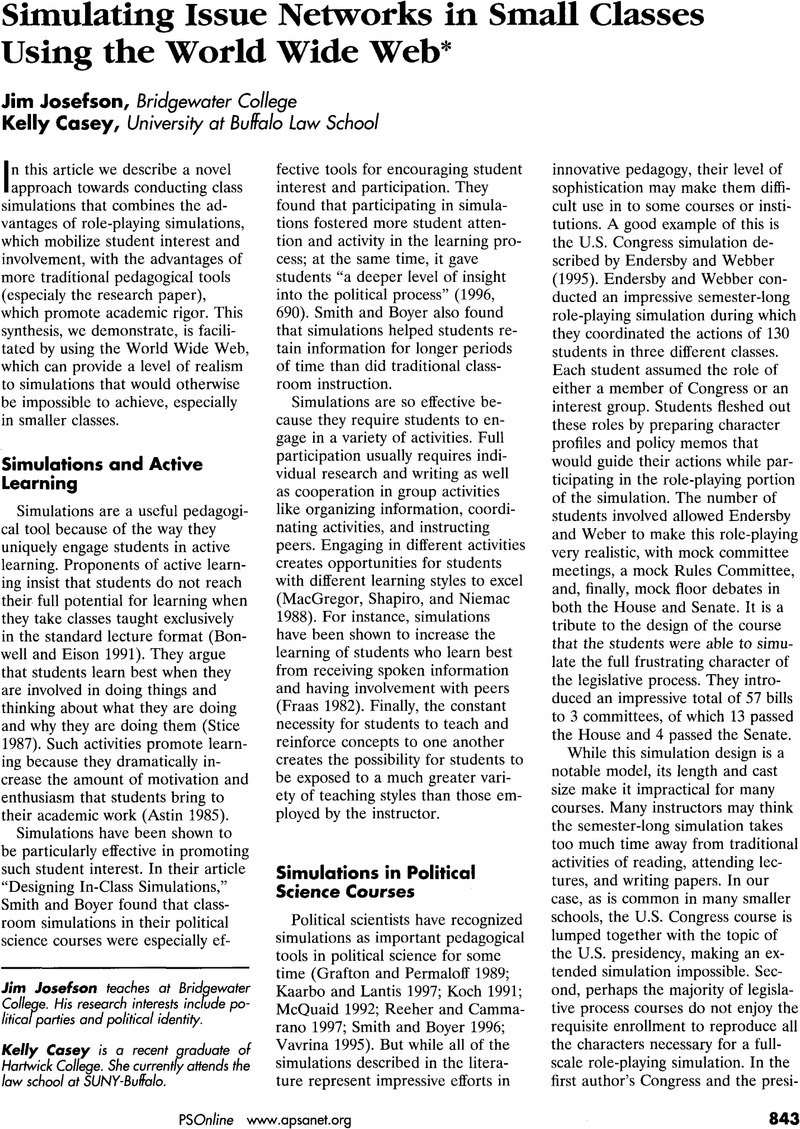Article contents
Simulating Issue Networks in Small Classes Using the World Wide Web
Published online by Cambridge University Press: 02 September 2013
Abstract

- Type
- News
- Information
- Copyright
- Copyright © The American Political Science Association 2000
Footnotes
Jim Josefson was the instructor for the simulation described in this article, and Kelly Casey was a student in the course. The co-authors thank Nicole Fish and Sarah Peterson of Hartwick College for their help in writing this article.
References
- 2
- Cited by




